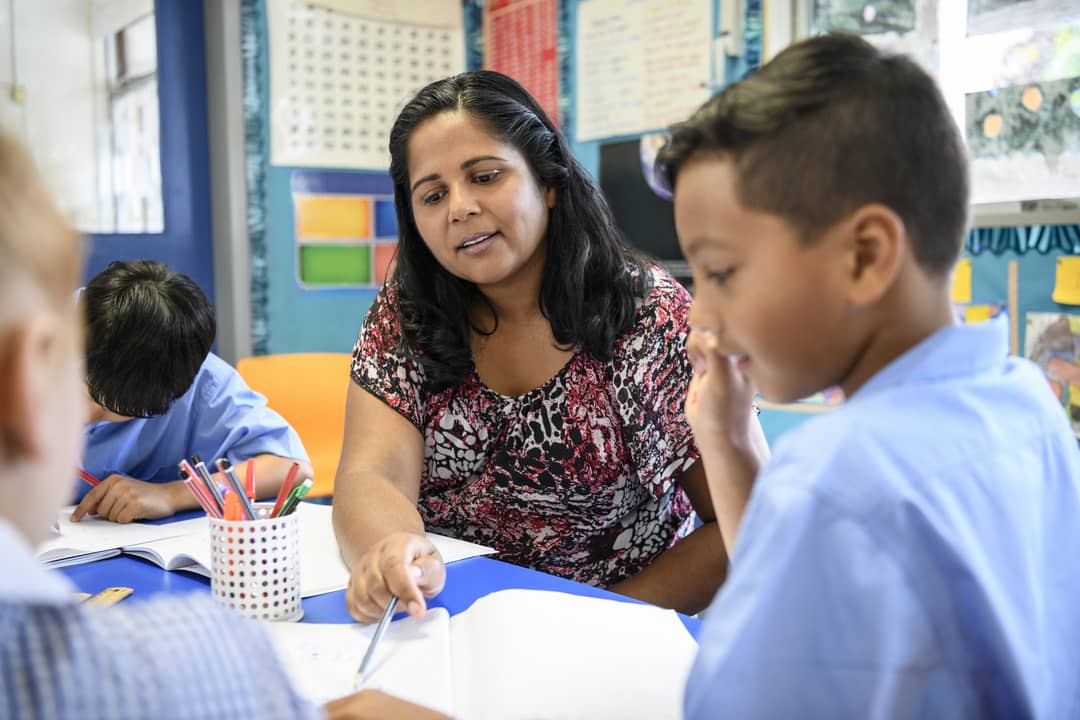Each year, as we hurtle towards the most controversial public holiday on the national calendar, my social media fills with discussion about why 26 January is a day of mourning, not celebration.
As teachers, it’s the time when we’re also knee-deep in preparation for going back to school. This year, articles discussing how we could mark this day were overshadowed by dealing with the challenges of returning to school during a global pandemic.
For many people, it’s a stressful, heated space, and a difficult time of year.
However, I’ve found comfort and hope with a community of First Nations and non-Indigenous drama educators who are committed to telling historical truths in education, and putting this into action on a daily basis.
Read more: Invasion or reconciliation: What matters in the Australian curriculum?
While our federal Minister for Education, Alan Tudge, questions the importance of this historical truth-telling, we’re spending our time working on practical solutions as to how best to embed First Nations’ truths in our classrooms.

We share resources, stories of successes and failures, and find joy in teaching this content, not because we have to, but because we really want to.
Working with students of all ages, we explore important moments both past and present, from the British invasion of these lands, to the more recent struggle to free the Aboriginal flag.
We engage with artworks created by First Nations artists, and develop performances showcasing how students connect with the artists’ key messages and ideas. We stage plays by First Nations playwrights. Through drama, we connect with communities, cultures, and Country.
Embedding First Nations perspectives into the curriculum may not be easy, but we do it because it matters. Any teacher will tell you there's satisfaction in doing something that’s worthwhile.
Drama is a powerful way to slide between the world as it really is, and the world as we want it to be. By stepping into someone else’s shoes we develop empathy and understanding, and experience emotions we might otherwise block.
We can also make mistakes. Students may express opinions that shock and harm. Teachers can teach ‘facts’ that you later find out are wrong. We can misappropriate cultures and experiences.
When mistakes happen, we remind each other: to lean into that discomfort rather than shutting it down. Find out how you can do better. Build relationships. Learn from your students. Learn from the many First Nations people who are telling us how this work can be done respectfully and appropriately.

Embedding First Nations perspectives into the curriculum may not be easy, but we do it because it matters. Any teacher will tell you there's satisfaction in doing something that’s worthwhile.
My interest in First Nations rights and reconciliation runs deep, inspired by family members who have been long-time campaigners. Coincidentally, I became a teacher just as new standards were introduced, mandating the inclusion of Aboriginal and Torres Strait Islander histories and cultures in our classrooms. I greeted this mandate with joy but, like many teachers, I didn’t know how to put it in place.
I was scared of getting it wrong, lacked the knowledge to get it right, and didn’t know where to start. However, I was determined to try, and eventually began a research journey that led me to fellow travellers.
As it turned out, other drama educators across the state were also taking steps on this path to engaging thoughtfully, joyfully and deeply with teaching for reconciliation. Our collaboration resulted in the teaching resource, Teaching First Nations content and concepts in the drama classroom: Advice for teachers in Victorian schools.
The resource answers key questions raised by teachers, such as:
- What if my students do something racist?
- Is it appropriate for students to perform traditional dances or ceremonies?
- Is it OK to cast non-Indigenous students as First Nations characters?
It’s now used by educators at all levels, as well as artists across Australia, and I encourage teachers to take a look. We’ve run professional learning workshops, a performing arts festival bringing together First Nations artists with secondary school drama students, and are researching how we can take this work further.
Reflecting recently with my fellow travellers on this learning journey, we realised that each of our decisions to engage was triggered by something different, but there’s a similarity in the quality of our engagement. We all share that sense of being driven by a deep moral purpose, influencing not only our teaching, but also how we approach our professional learning.
We’re optimistic about the way forward. The conversations are happening. Our little group of six passionate drama teachers has expanded over the past two years into a community of more than 30 educators who are doing the deep work that really impacts. The ball keeps rolling.
It only takes a small number of passionate people to trigger major social and political change, but it’s not enough to aim just for attitude changes. We must strive for actions, too.
But most importantly, we must continue to discuss these issues long after the heat of Australia Day cools.





